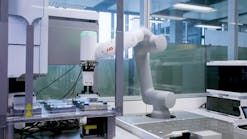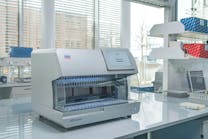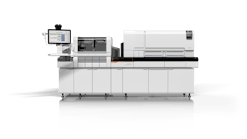Lean management in hematology provides better patient care
Many labs have adopted Lean management practices to eliminate waste and errors in various ways. Healthcare adopted Lean management principles in the 2000s, although other industries and manufacturing companies have been practicing them for longer. In addition to eliminating waste, laboratories that implement Lean management report optimized workflow, improved staff productivity, error reduction, and quality improvement. Implementing Lean management in laboratories includes a process that differentiates between value-added and non-value added steps.
The general idea of intentionally incorporating efficiencies into workflow, of course, is far from new. In the early 1900s, Henry Ford introduced a mass production system at Ford manufacturing to produce the Model-T automobile. With the new system, the work was organized and divided so that each worker performed a single task, instead of one worker assembling an entire unit. Organizing the process and making it simple and repetitive resulted in greater productivity, shortened delivery time, and lowered cost, which improved customer satisfaction—and basically made the early automobile affordable to Americans of that era.
Part of Lean management as it is practiced today is the “5S” organizational method: sort, straighten, shine, standardize, and sustain. Sort is to remove any unnecessary items from the work area. Straighten is to move items closer and within reach to be easily accessible during everyday operation. Shine is to clean everything, such as work surfaces, floors, and instruments. Standardize is to keep everything in order by standardizing procedures and roles for better workflow. Sustain is the commitment to the work from management and staff members to be disciplined and follow the rules.
In this article, we will discuss the current state of hematology laboratories and how laboratories can use Lean management to optimize their workflow and turnaround time. Two laboratory managers and early adopters of Lean management from Tufts Medical Center in Boston, Massachusetts, and MultiCare Health System Laboratories Northwest in Tacoma, Washington, provide insight on how Lean management has helped their laboratories.
The current state
Hematology laboratories are heading toward reliable automation to achieve faster turnaround times. The more automated the laboratory, the faster the results are released to physicians, which results in better patient care. Hematology, in particular, has moved towards automation of the complete blood count (CBC), white blood cell (WBC) differential, and sedimentation rate (ESR). However, some tests, such as cerebrospinal fluid (CSF), are often done manually.
Moreover, despite the shift toward automation, many laboratories do not have standardized procedures for testing body fluids. Depending on the color and clarity of the sample, laboratorians are left with a decision to make on how to run the sample and which analyzer to use, which wastes time and causes a delay in results. Also, many body fluids analyzers do not have a low linearity or limit of detection, so staff have to resort to the manual method.
Workflow is affected because often the instruments are not in the same area as the manual count bench. Laboratorians have to walk to the analyzer—which could be located at the other end of the lab—to run the sample. But the work does not stop there; they then have to walk back to the hematology area to prepare the slides and read the differential.
In addition, it is a sad truth that labs are increasingly being asked, as the saying goes, “to do more with less.” Resources and staff are being reduced in many cases, while testing and the pressure to produce results are increasing. Yet quick turnaround time is important to get timely results to physicians that guide their diagnoses and enhance patient care. When labs fail to standardize procedures, the workflow suffers, physicians are frustrated, and patients suffer.
Adopting Lean practices
In an effort to create a Leaner environment, hematology laboratories are replacing manual methods with accurate and reliable automated analyzers. The goal is to reduce waste in the form of labor, interoperator variability, and human error.
For Tufts Medical Center, automating CSF cell counts means huge labor savings. “My staffing isn’t growing, so I am always thinking about how to get things done with fewer people,” says Rouette Hunter, Hematology Laboratory Manager at Tufts. “The highest cost of performing manual cell counts was the labor. Moving to an accurate, reliable automated cell counter has allowed us to consolidate two work stations—urinalysis and cell counts—to one microscopy bench. Now we have one tech stationed at the bench instead of two,” she adds.
Often, another benefit of reliable automation is that a broader group of laboratorians can operate the analyzer; with manual methods, more decision-making is required, which means more experienced staff. “Our automated cell counter removes the need for staff to classify red versus white cells,” says John Baker, Laboratory Manager at MultiCare Health System Laboratories Northwest. “As a result, generalists, not just hematology specialists, can run the analyzer. “
Lean laboratories are seeking analyzers that offer better precision than manual methods. “We cut our coefficient of variation in half when we moved from manual to automated cell counts,” says Baker. They are also standardizing processes as much as possible. This makes it easier to train staff and reduces manual errors. In October 2016, one MultiCare hospital purchased a new cell counter. By March 2017, the cell counter was installed in four of the five MultiCare Health System hospitals. “We’re confident that techs at each of the sites will be performing cell counts the same way,” says Baker.
Lean laboratories are spending time optimizing their workflow to eliminate waste. This means analyzing all processes in the lab. “Defining roles very clearly made our workflow more efficient. Instead of duplicating efforts, we follow the ‘Do Your Job’ mantra here,” says Hunter. Lean laboratories are also moving related processes close together to minimize waste in the form of walking time. “We intentionally located our CBC analyzers next to the differential bench,” says Baker. Improving workflow by removing waste allows staff to do their job more easily, which can result in an increase in productivity and satisfaction. Some laboratories are also keeping workstations open later in the evening. “The work never stops at 5 pm,” says Hunter. “Rather than rushing to get the work done, we found it is more efficient to keep equipment up and running.”
By moving toward automation and improving workflow, laboratories achieve faster and more consistent turnaround time. Laboratories benefit from creating value stream maps to examine where time is spent and to identify bottlenecks. The goal is to reduce non-value add activities (waste) as much as possible. Using Lean tools, MultiCare Health System was able to significantly reduce its overall turnaround time. “We are able to complete 90 percent of laboratory work in 30 minutes, compared to one hour in many other labs,” says Baker. It is important that labs monitor their turnaround time and keep a mindset of continuing improvement. They should organize a continuous improvement team, knowing that Lean is not a one-time evaluation but a continual examination of processes and waste. “At Tufts, being leaner in certain areas allows us to spend time on special testing requested by researchers and other hospitals,” says Hunter.
By implementing Lean practices such as evaluating workflow, turnaround time, and reliable automation, hematology laboratories are able to do more with fewer resources. Lean practices increase productivity, which gets results to physicians more quickly and allows them to provide the best patient care possible.
The authors would like to thanks the following people for their help in preparing this article: John Baker, MT(ASCP), MBA, Laboratory Science & Technology Manager at MultiCare Health System Laboratories Northwest in Tacoma, WA; Craig Vilk, MT(ASCP)SHCM a hematology technical specialist at MultiCare Health System Laboratories Northwest in Tacoma, WA, and Rouette Hunter, MT(ASCP), Hematology Laboratory Manager at Tufts Medical Center in Boston, MA.
Julie MacKenzie, MBA, serves as product specialist for the GloCyte Automated Cell Counter for CSF at Advanced Instruments.
Reem Kassab, MLS(ASCPCM), serves as application specialist for the GloCyte Automated Cell Counter for CSF.
George Hong, PhD, serves as product manager for the GloCyte Automated Cell Counter for CSF.





